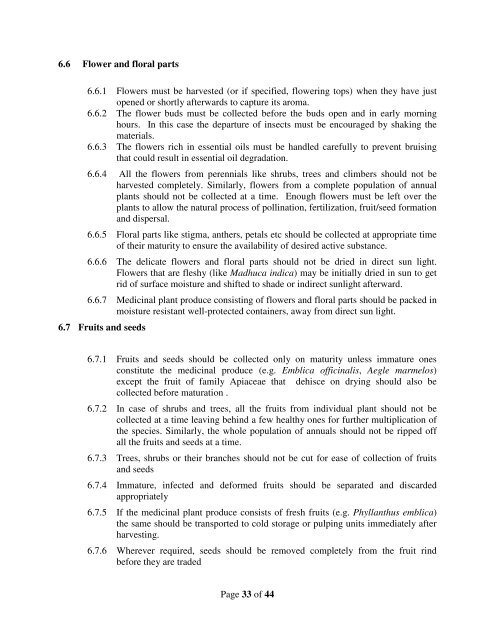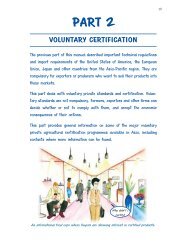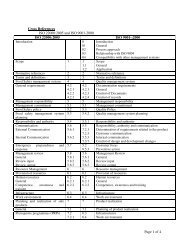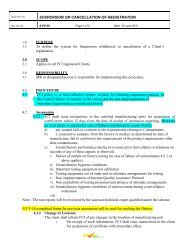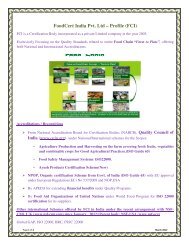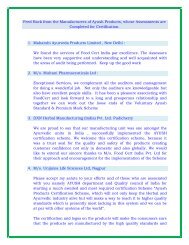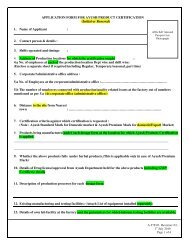Standard for Good Field Collection Practices - NMPB
Standard for Good Field Collection Practices - NMPB
Standard for Good Field Collection Practices - NMPB
Create successful ePaper yourself
Turn your PDF publications into a flip-book with our unique Google optimized e-Paper software.
6.6 Flower and floral parts<br />
6.6.1 Flowers must be harvested (or if specified, flowering tops) when they have just<br />
opened or shortly afterwards to capture its aroma.<br />
6.6.2 The flower buds must be collected be<strong>for</strong>e the buds open and in early morning<br />
hours. In this case the departure of insects must be encouraged by shaking the<br />
materials.<br />
6.6.3 The flowers rich in essential oils must be handled carefully to prevent bruising<br />
that could result in essential oil degradation.<br />
6.6.4 All the flowers from perennials like shrubs, trees and climbers should not be<br />
harvested completely. Similarly, flowers from a complete population of annual<br />
plants should not be collected at a time. Enough flowers must be left over the<br />
plants to allow the natural process of pollination, fertilization, fruit/seed <strong>for</strong>mation<br />
and dispersal.<br />
6.6.5 Floral parts like stigma, anthers, petals etc should be collected at appropriate time<br />
of their maturity to ensure the availability of desired active substance.<br />
6.6.6 The delicate flowers and floral parts should not be dried in direct sun light.<br />
Flowers that are fleshy (like Madhuca indica) may be initially dried in sun to get<br />
rid of surface moisture and shifted to shade or indirect sunlight afterward.<br />
6.6.7 Medicinal plant produce consisting of flowers and floral parts should be packed in<br />
moisture resistant well-protected containers, away from direct sun light.<br />
6.7 Fruits and seeds<br />
6.7.1 Fruits and seeds should be collected only on maturity unless immature ones<br />
constitute the medicinal produce (e.g. Emblica officinalis, Aegle marmelos)<br />
except the fruit of family Apiaceae that dehisce on drying should also be<br />
collected be<strong>for</strong>e maturation .<br />
6.7.2 In case of shrubs and trees, all the fruits from individual plant should not be<br />
collected at a time leaving behind a few healthy ones <strong>for</strong> further multiplication of<br />
the species. Similarly, the whole population of annuals should not be ripped off<br />
all the fruits and seeds at a time.<br />
6.7.3 Trees, shrubs or their branches should not be cut <strong>for</strong> ease of collection of fruits<br />
and seeds<br />
6.7.4 Immature, infected and de<strong>for</strong>med fruits should be separated and discarded<br />
appropriately<br />
6.7.5 If the medicinal plant produce consists of fresh fruits (e.g. Phyllanthus emblica)<br />
the same should be transported to cold storage or pulping units immediately after<br />
harvesting.<br />
6.7.6 Wherever required, seeds should be removed completely from the fruit rind<br />
be<strong>for</strong>e they are traded<br />
Page 33 of 44


